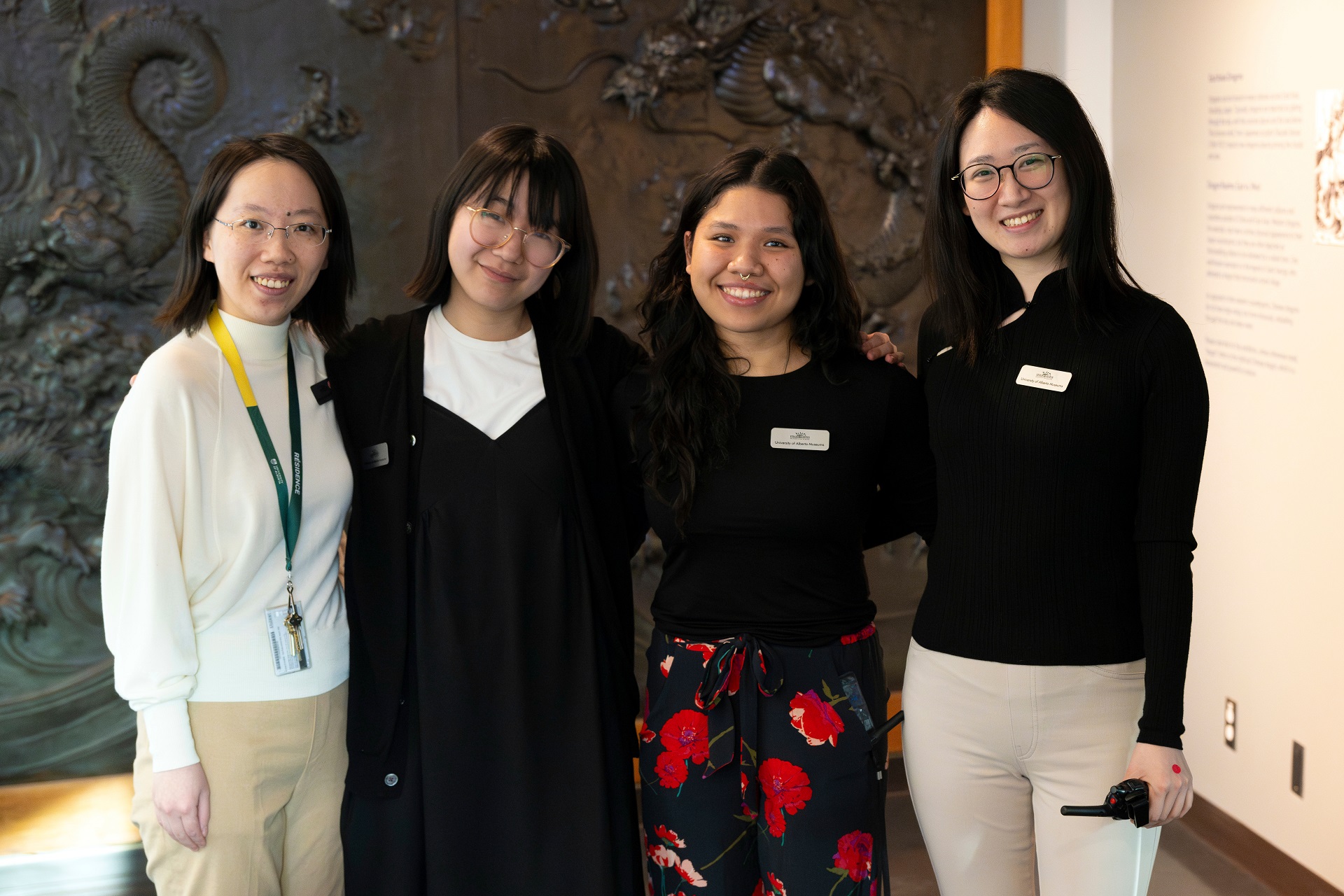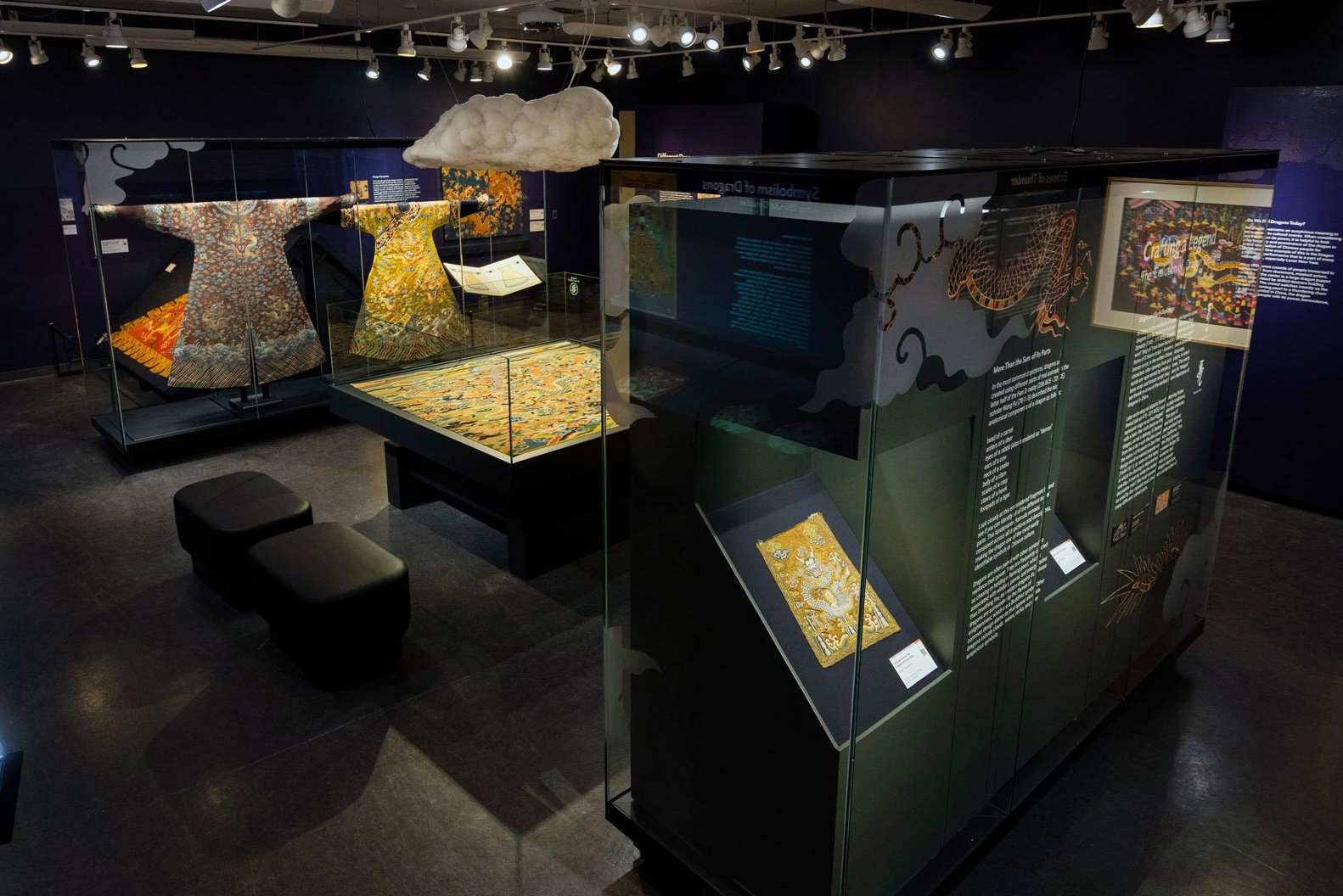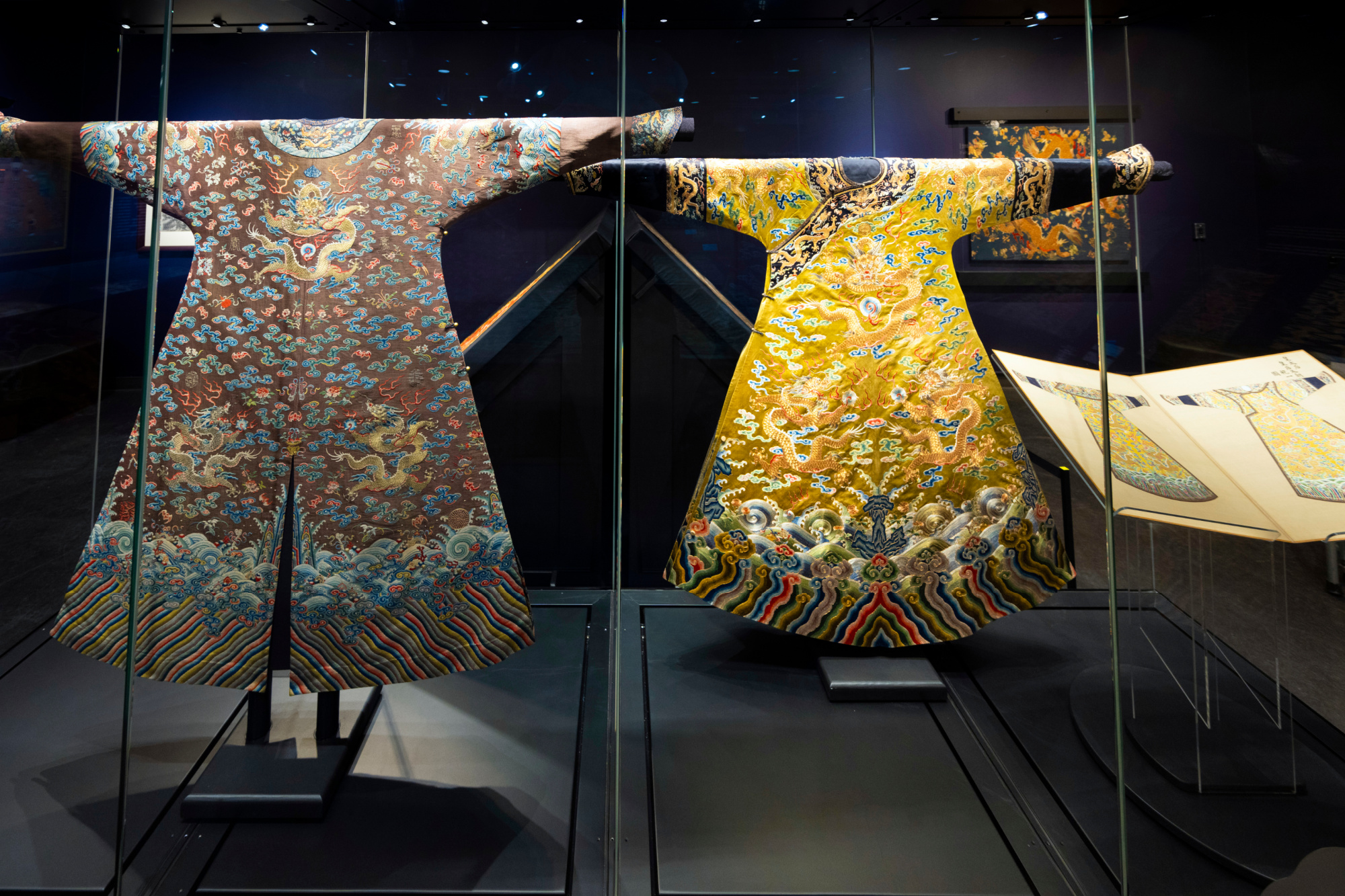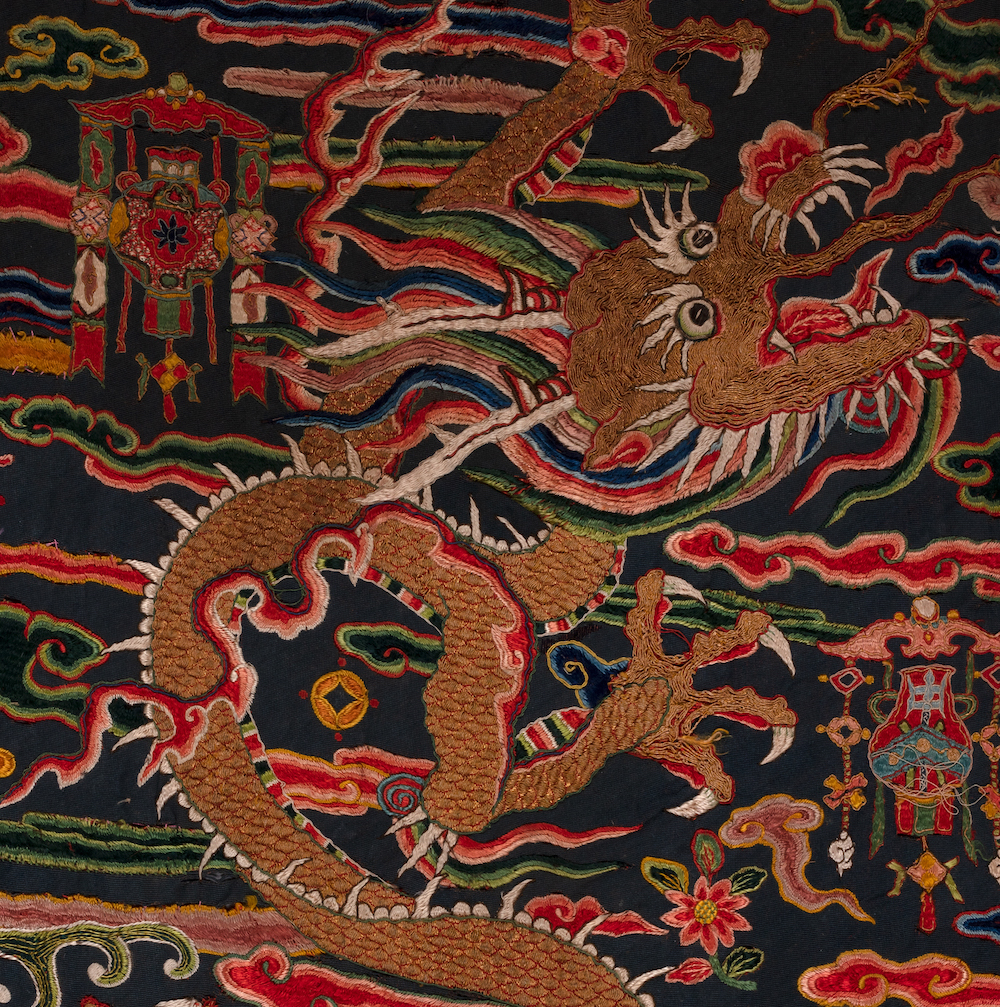Wang Gai’s Pursuit of Ink and Inspiration
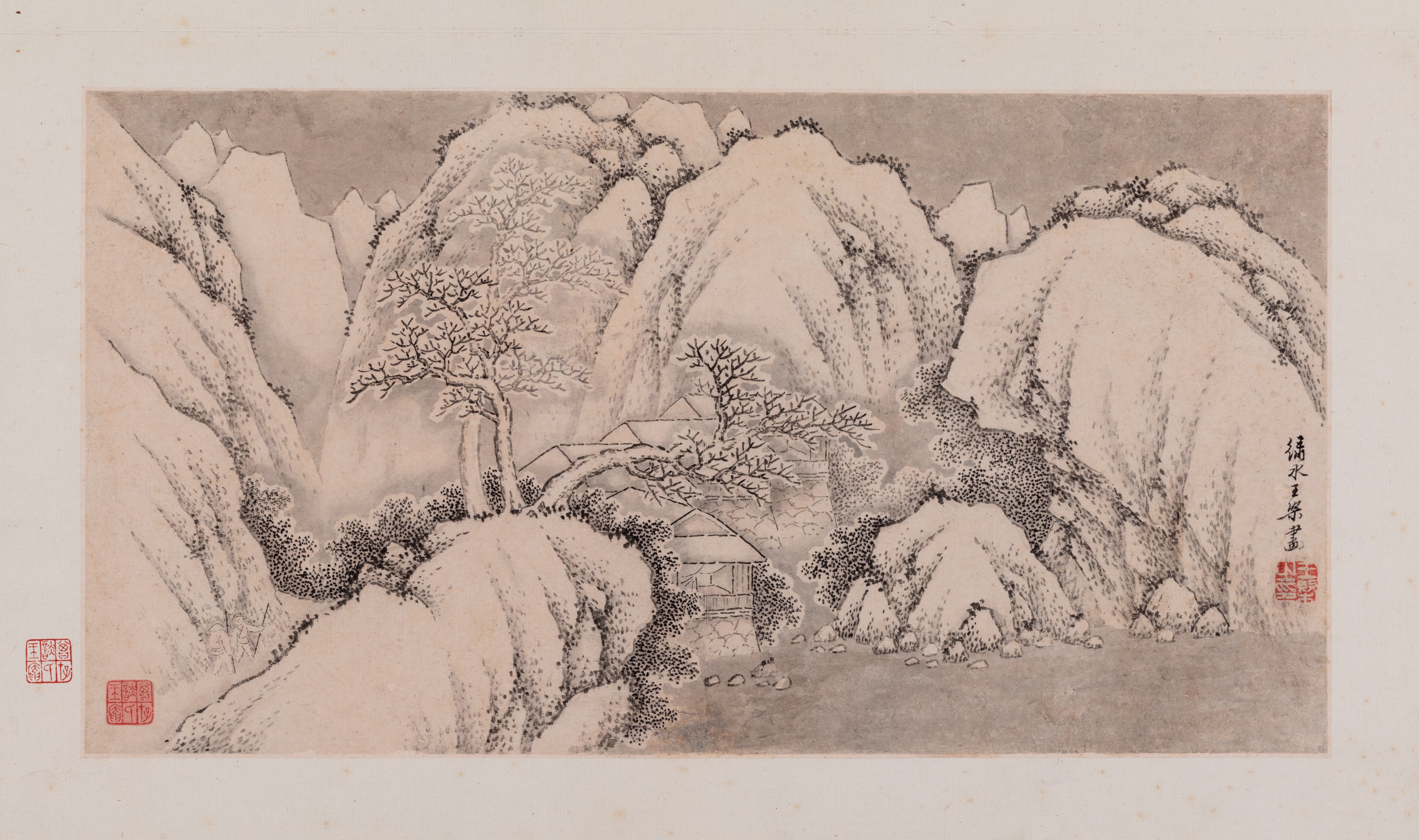
Album Leaf from Figures in River Landscape, 1702; Wang Gai; Mactaggart Art Collection, University of Alberta Museums; Gift of Sandy and Cécile Mactaggart; 2004.19.72.12
Figures in River Landscape (2004.19.72.12) by Wang Gai, from the Mactaggart Art Collection, is an album consisting of twelve ink paintings and one calligraphic letter. Wang Gai, an artist in Nanjing during the late seventeenth and early eighteenth centuries, also co-authored and illustrated the Mustard Seed Garden Manual of Painting, an important manual of the principles of painting, including brushwork techniques and examples of plants, animals, birds and natural forms common in landscape paintings.
This scene from the twelfth leaf appears to be chaotic at first; there are several mountain peaks, a moss-like dotted pattern spreading through the scenery, and three leafless trees sprouting from the big rocks. Despite the chaos, this work of art has a lot to offer in terms of solitary and harmonious imagery. There is a subtle balance of negative space and dotted foliage, which creates depth in the painting and exposes the central atmosphere of the painting. In this painting, for example, the first tree from the left has been painted with a light-handed brushstroke. Unlike the other trees, it appears muted in colour and seems to fade away into the background. The white halo around it adds to the ghostly appearance. Such an effect can also be seen in the river water, which rises above the earth and creates a fog-like presence, amplifying the spiritual and ethereal essence.

The figures in Wang Gai’s paintings are generally solitary and seem insignificant amidst the wide atmospheric settings. In this painting, the figures in the bottom left are speaking with each other while walking through the mountains towards their cottage. They are painted with very delicate ink strokes that seem to break at points rather than being continuous, making them barely visible against the magnificent landscape. Wang Gai’s atmospheric landscapes certainly convey a feeling of tranquillity and calmness and this album leaf is distinct in terms of presence and technique.
The use of translucent and diluted brush marks in Wang Gai’s painting is impeccable. These marks create an atmosphere of a serene presence that enlightens me as an observer. The repetitive mark-making and fragile yet lucid brush marks with a very light ink all contribute towards the creation of range and depth perception in painting. The continuous dotted pattern creates its own space and gives a character to the underlying object. Inspired by this spectacular mark-making, I created a few ink paintings that are invigorated with similar semi-transparent brush strokes while still embracing the diluted nature of ink.

Bibliography
Chelsey Van Weerden, "Wang Gai - China'’'s Imperial Modern The Painters"
Edited by Lisa Claypool, 42-47. Published by University of Alberta Museum, 2012.
Laphamsquarterly.org. “Wang Gai”
https://www.laphamsquarterly.org/contributors/wang-gai
metmuseum.org. “Reminiscence of Jinling 1686” https://www.metmuseum.org/art/collection/search/735059
Rene Descartes, "Meditations on First Philosophy" In Meditation - VI, Translated by John Veitch, 1 -14. classicallibrary.org.http://www.classicallibrary.org/descartes/meditations/9.htm
Ualberta.ca/museums “2004.19.72 - Figures in River Landscape”
https://search.museums.ualberta.ca/21-19137
Wang Gai, “Mustard Seed Garden Manual of Painting”.
Translated by Li, Yu and Sze, Mai-Mai. Princeton, N.J.: Princeton University Press, 1977, Part I (11-314).
